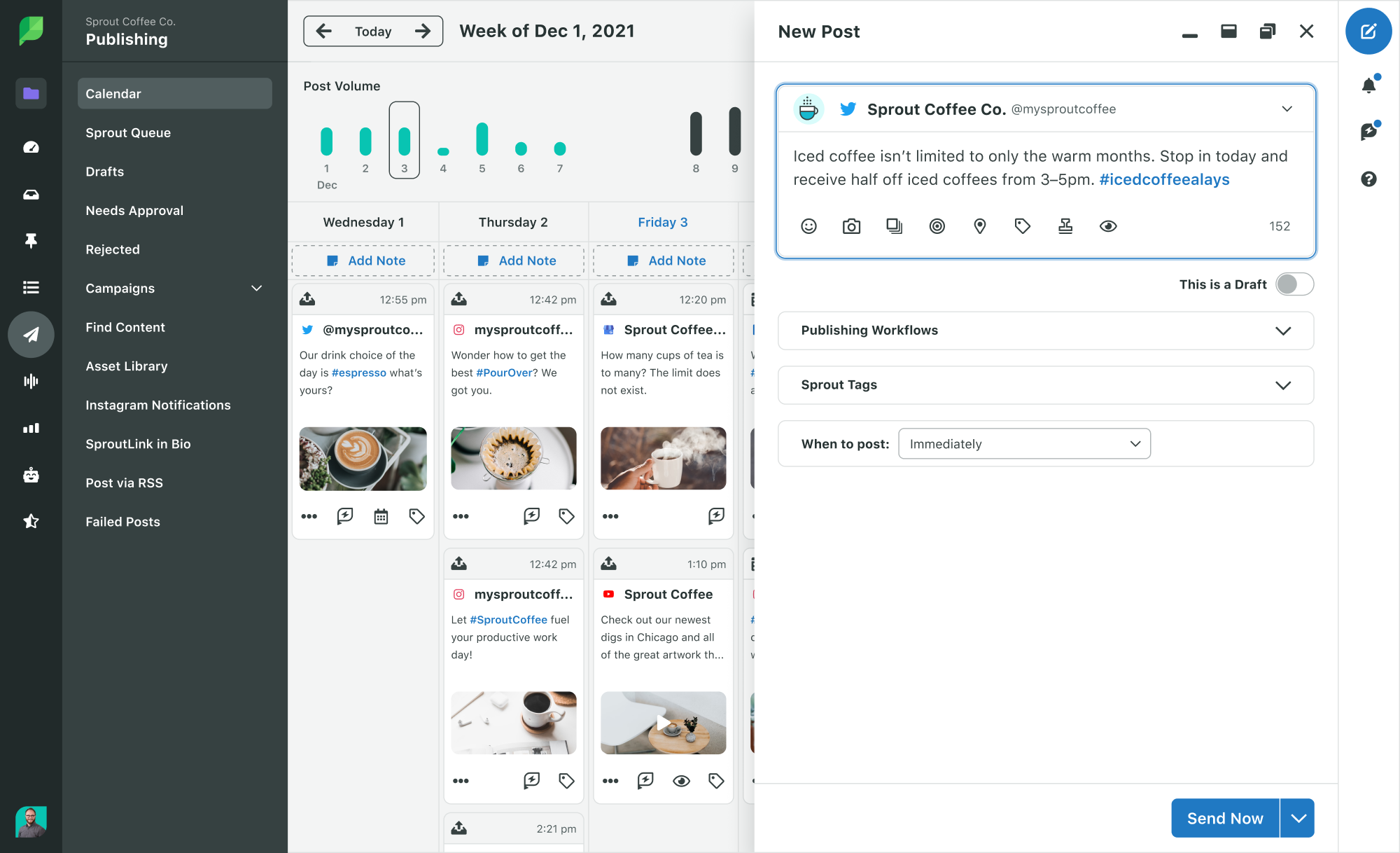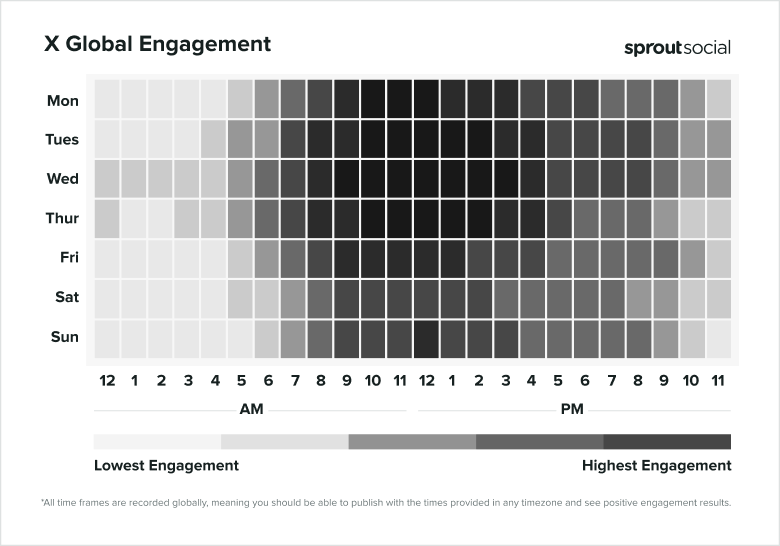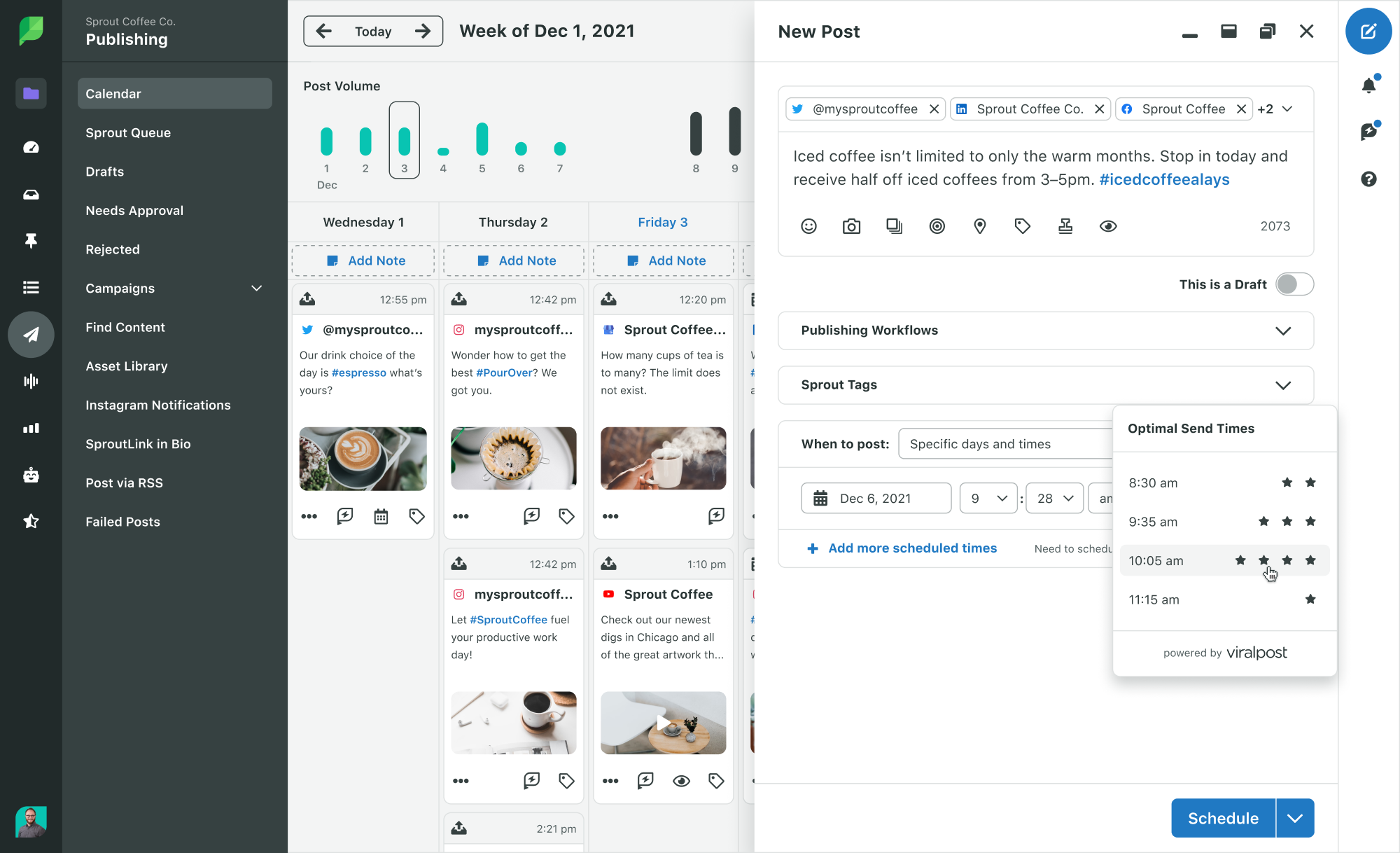How the Twitter algorithm works in 2025 [6 strategies]
Table of Contents
Social media platforms evolve quickly, and Twitter (rebranded as “X”) is no exception. Twitter also went through some major changes following its rebrand to X, which reshaped its features, user experience and most importantly—its algorithm.
Working with the Twitter (X) algorithm is important if you want to grow organically on the platform. In this post, we’ll cover how the algorithm has changed recently and the different factors it considers when ranking content.
We’ll also share tips on how to leverage those factors to your advantage and maximize social media engagement and visibility on the platform.
What is the Twitter (X) algorithm?
The Twitter (X) algorithm is the platform’s recommendation system that uses machine learning to determine what content users see in their Feeds. Various factors, including relevance, popularity and the types of content you engage with determine the posts you see.
Like all social media algorithms, the mix of factors that rank posts is much more complex in practice and is constantly being refined. Marketers need to stay updated with all the latest changes to ensure their Twitter (X) marketing strategy is relevant and successful.
How has the Twitter (X) algorithm changed?
Back in 2017, Twitter (X) introduced the relevance model in its algorithm, replacing “While You Were Away” with “In Case You Missed It”. Those changes continue to resonate today with posts presented to users based on their relevance instead of in a chronological order.
Another big recent change to the Twitter (X) is the algorithm now puts more emphasis on highlighting content from smaller accounts. The goal is to create a more level playing field and expose users to a wider range of voices and perspectives on the platform. This update gives smaller accounts a better chance to grow their audience and make an impact.
Before we dive further into the details of the current Twitter algorithm, it’s important to recognize that:
- The Twitter algorithm is constantly evolving.
- The Twitter timeline is a mix of algorithmic content and real-time content.
- You can set your preferences to tweak the Twitter algorithm in your own feed display.
How the Twitter (X) algorithm works in 2025
If you open your Twitter (X) app, you’ll see three distinct feeds on the platform:
- The ‘For You’ timeline
- The ‘Following’ timeline
- The Explore tab
Each one ranks content in a different way. Here’s a quick breakdown of how the Twitter (X) algorithm works across all three feeds.
How Twitter (X)’s ‘For You’ timeline algorithm works
The ‘For You’ timeline takes tweets from accounts you follow and mixes them with recommendations from accounts you don’t.
But how does it decide what to show you?
Primarily, the algorithm looks at things like your past interactions, what similar users are engaging with and what’s trending. It then scores and ranks Tweets based on how likely you are to engage with them. This way, your timeline stays personalized and engaging.
How Twitter (X)’s ‘Following’ timeline algorithm works
The ‘Following’ timeline is a bit more straightforward. It shows you tweets in reverse chronological order from the accounts you follow.

No fancy algorithms here, just the latest tweets from your network in real-time. It’s a great way to stay updated with your favorite accounts and see content as it’s posted.
How Twitter (X)’s ‘Explore’ tab algorithm works
The ‘Explore’ tab helps you stay in the loop with what’s happening around the world and find new content beyond your usual feed.

It aggregates and recommends content from various areas of the platform, including events, topics and videos. You can further toggle between several tabs here, including personalized (‘For You’) content, trending topics, news, sports and entertainment.
Top Twitter (X) algorithm ranking signals to look for
To crack the code of the Twitter (X) algorithm, you need to understand the key ranking signals it uses to determine what shows up in users’ Feeds. Let’s look at the top factors the algorithm considers when deciding which tweets should take the spotlight.
Recency
Even though Twitter (X’s) “For You” timeline no longer follows a reverse chronological order, the algorithm still takes into account how fresh a tweet is when deciding where to rank it.
People often want to see the latest and updated content, and the algorithm knows that. So, if you’re tweeting about trending topics (e.g. AI) and current events, you’ve got a better chance of getting more visibility as your posts are likely to encourage engagement.
Engagement
The Twitter (X) algorithm pays attention to how many likes, replies and reposts a tweet gets. If a post is racking up a lot of engagement, the algorithm sees it as valuable and relevant, and it’s more likely to show that post to a wider audience.
Engagement is like a quality stamp—it tells the algorithm, “Hey, this content is resonating with people!” That’s why posts that get conversations going and encourage interaction have a better chance of being bumped up in the rankings.
Account credibility
If you’ve got a verified account and a good reputation on the platform, your posts are more likely to get a boost in people’s Feeds. It’s Twitter (X’s) way of making sure content from respected, influential accounts gets seen by more people.

The algorithm looks at things like verification, your follower-to-following ratio, how consistently you use your account and whether you’ve had any bans. All these factors signal to Twitter (X) your account is credible, which helps improve your visibility.
Type of content
The Twitter (X) algorithm favors certain types of content over others, especially anything with rich media like GIFs, images, videos or polls. Posts with visual content generally drive more engagement, which is why they get a higher score in the ranking system.
Relevancy
The algorithm’s goal is to show people content that matches their interests, preferences and behavior on the platform. To figure out what’s relevant, Twitter (X’s) algorithm looks at a bunch of signals, like who you follow and the topics you like to interact with.
The algorithm also takes into account the relevance of hashtags, keywords and trending topics when it’s evaluating a Tweet. Basically, if the content is timely, informative and valuable to a user, it’s going to show up higher on their personalized For You feed. To truly master these ranking signals and gain a strategic edge, leveraging a good Twitter analytics tool is essential for understanding the nuances of the Twitter algorithm and optimizing your content for maximum impact.
What the Twitter (X) algorithm doesn’t show
The Twitter (X) algorithm filters out certain content from your feed that may negatively impact your user experience on the platform.
This includes spam or potentially harmful content, posts you’ve already seen, posts from blocked and muted accounts, and too many consecutive posts from a single author.
6 tips for working with the Twitter algorithm to maximize engagement
Understanding how the Twitter (X) algorithm works is just the start. To get more visibility on your posts, you’re going to need to do the work.
The tips below will set you up with some of the essential ways to adapt to the Twitter algorithm and stay flexible when it appears to affect your social media metrics.
1. Post consistently
A lot of people tend to log on to Twitter (X) for a few minutes a day, sending all of their Tweets at once and engaging with the first few posts they see. For brands, it’s important to maintain an active presence on Twitter (X) throughout the day so your audience is more likely to see your posts.
One way to stay consistent on social media is to plan your content in advance. You can do that with a social media publishing tool like Sprout Social, which gives you a birds’ eye view of your upcoming publishing calendar, and lets you draft and schedule posts easily.

There are varying opinions on when and how many Tweets you should post a day in order to get the most Twitter engagement from your efforts. Which leads into our next tip…
2. Post at the best times
Knowing when the best time to post can be tricky at first because it largely depends on your audience. While you can uncover this by manually reviewing your performance analytics, we’ve already done the work to help you get an advantage. Here are insights into the best times to post on social media for different networks and industries.

With Sprout’s patented ViralPost technology, you can take your strategy one step further. Our Optimal Send Times feature analyzes the behavior of your specific audience and zeroes in on the top times to post that are specific to your account.

This frees up time to focus on amplifying your strategy, such as by measuring success using Sprout’s Twitter analytics and building on what works for your next campaign.
3. Choose the right content types and formats
Posting good quality content that’s relevant, interesting and useful is non-negotiable for brands on any social media platform, including on Twitter (X.) But there’s another factor you need to consider—posting the right type of content.
Rich media is one of the things the Twitter (X) algorithm considers when ranking content because its users are more likely to engage with it. This includes videos, GIFs, images, carousels and even polls.

However, videos seem to be the way to go if you want to drive engagement. According to Twitter (X) data, four out of five user sessions on the platform now include watching video. Interestingly, Sprout Social’s research points out the same.

The takeaway: Prioritize rich media in your social media content strategy, especially video.
4. Optimize for engagement
Considering how much engagement impacts the algorithm, it’s important to plan content that encourages users to like, comment and retweet your posts. Rich media is one way to spark engagement on your Tweets, but there are other ways you can do this, too.
You can:
- Ask thought-provoking questions
- Use relevant trending hashtags and piggyback on viral memes and trends (just be sure they fit your brand!)
- Participate in popular Twitter (X) campaigns
- Tag other users
- Respond

5. Respond quickly to replies
The Twitter (X) algorithm prioritizes recent content, and engaged users. It’s important to respond to any engagement your post, and even your brand, receives as soon as possible, preferably in the first 2–3 hours.

For example, you should:
- Respond when someone tags or mentions you.
- Respond to any replies your post gets.
- Respond to reposts by replying, even if it’s just to say thank you.

Using a social media monitoring tool like Sprout Social is a great way to be notified when your brand is mentioned on Twitter (X), even if you’re not tagged. You can set up specific brand keywords you want to monitor so you can stay on top of every post when people mention your products, campaigns and other important brand terms.

6. Consider running Twitter ads
If you’re struggling to get organic reach, Twitter (X’s) advertising can be a great way to give your content that extra push it needs. This is particularly great way for new businesses on Twitter (X) who are just starting out to get extra exposure.

Don’t have the budget for ads? Try your hand at some of the non-paid tactics on this list first. If you’re interested, you can learn more about how to run successful Twitter (X) ads here.
Work with the Twitter algorithm to boost your strategy
The Twitter algorithm ultimately exists to help you, since it’s helping get your post in front of interested audiences rather than buried in a constant flow of new posts.
t’s also constantly evolving. As a marketer, understanding how the algorithm works can improve your content planning and help you better understand why your posts succeed or fall flat.
If you’re looking for a social media management platform to take your Twitter (X) presence to the next level, check out Sprout Social. We’ve got all the tools you need to establish a solid, engaging brand presence on Twitter and other social networks.
Sign up for Sprout’s 30-day free trial and see for yourself—no credit card required!

Share